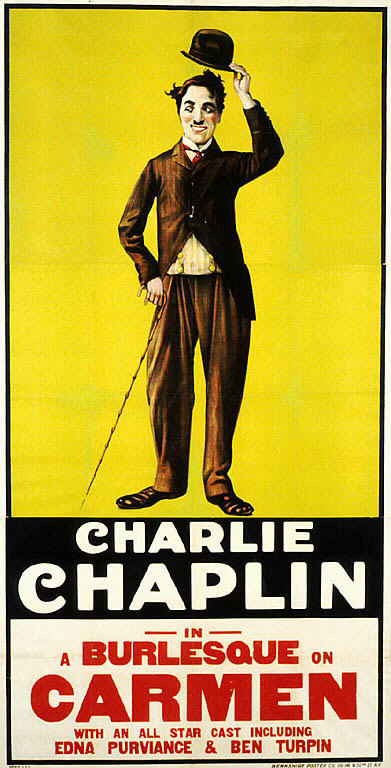Remembering an Iconic Era Lost to Time: The Stars and Films of the Silent Pictures
Curator Amy Henderson reminds us of power and influence and glory of the celebrities that pioneered the silent film era
/https://tf-cmsv2-smithsonianmag-media.s3.amazonaws.com/filer/0f/c7/0fc724c0-3a76-496b-8a88-628de4a1bd90/8600316c_1web.jpg)
An Associated Press story this week describes a remarkable and historic discovery: while tearing down a barn in Keene, New Hampshire in 2006, a carpenter recovered a canister with the only known copy of a 1911 Mary Pickford movie that marked a turning point in her career. The Library of Congress has now restored the film, and it will be screened next month at Keene State College.
The movie is historically a wow because it is the first movie to call Mary Pickford by name. In the earliest years of silent movies, all actors were anonymous. No stars were listed because producers were worried that if actors were identified, some would become famous—and demand more money.
The long-missing film, Their First Misunderstanding, is a ten-minute comedy/drama that co-starred Pickford and her then-husband, Owen Moore. The producers were right to be worried about unleashing star power, and “America’s Sweetheart” turned out to be a tough-minded businesswoman. By 1915 her salary had gone from $100 per week to half a million dollars a year, fueling her rise to become, as her best biography entitles her, “The Woman Who Made Hollywood.”
Earlier this month, the National Portrait Gallery screened a silent movie that graphically displayed the wonderful sophistication silent films had achieved during their heyday. The 1927 film, Wings was a Paramount Famous Lasky Pictures production with an A-List cast headed by their biggest star, Clara Bow, along with Richard Arlen and Charles “Buddy” Rogers—with a brief cameo by young Gary Cooper, whose riveting appearance launched him to fame. The film was directed by William Wellman and featured dazzling World War I flying scenes; Arlen and Wellman had been aviators during the war, and Rogers took flight training for the film.
/https://tf-cmsv2-smithsonianmag-media.s3.amazonaws.com/filer/09/a6/09a6e260-7476-41d4-b3a4-813dbaf94306/amy-henderson_npg1401-2001.jpg)
/https://tf-cmsv2-smithsonianmag-media.s3.amazonaws.com/filer/57/2e/572e6528-a48e-4cbf-8cfe-d97cbdae135c/beatgilmoreweb-copy.jpg)
Released three months after Charles Lindbergh’s historic solo flight across the Atlantic, Wings was a box office sensation. The public was infatuated with aviation derring-do, and this movie packed first-run theaters for over a year. The newly-created Academy of Motion Picture Arts & Sciences honored Wings as “Best Picture” at the first Academy Awards ceremony. (Sunrise received the award for “Best Unique and Artistic Picture,” a category deleted after this first ceremony.”)
In Hollywoodland (as the original sign read), 1927 was a year of high irony, because just as silent movies reached a remarkable level of artistry, “talking pictures” burst onto the screen and transformed the entire industry into an “all-talking, all-singing, all-dancing” spectacle.
Like 80 percent—yes, eighty per cent!—of all silent movies, Wings was considered “lost” for decades until a print was found in the Cinimetheque Francaise archive in Paris. Then, although no original negatives exist, Paramount found a badly-decayed spare negative in its vaults. Thanks to modern technology, the studio was able to restore the film, and last year, on its centennial anniversary, Paramount released a beautifully-remastered high-definition version of this silent classic. It was this remarkable film that we were able to screen at the museum.
I was still enthralled by this movie’s soaring imagery when a new book, entitled Still, led me even more deeply into silent film’s ethereal universe. David S. Shields, the McClintock Professor of Southern Letters at the University of South Carolina, has spent the past decade researching still photography in the silent era. Often, he has discovered, these photographs are the sole remaining evidence of a medium that was “one of the most significant popular art forms of the modern age.”
Shields and I share an interest in the intricate relationship between still photography and film stardom. I have written about how Hollywood still photographs during the 1930s and ‘40s created glamorous star images that were lasting and memorable, and about how the iconic image of a star is often that of the frozen photographic moment rather than the fleeting image projected on film.
In Still: American Silent Motion Picture Photography, Shields surveys an earlier movie generation and argues that for silent stars, “the still image rivaled the moving image in revealing personality and that it proved a more durable medium for preserving action, character, and personality than the motion picture.”
Because so many silent films are lost, still images are often the only extant visual documents that chronicle the movie industry’s early years. Many of the “stars” who pioneered the feature film era are unknown to us today: a movie fan magazine in 1914 listed the most popular star as Earle Williams, followed by J. Warren Kerrigan, Arthur Johnson, and Carlyle Blackwell. None of these is recognizable today, but by 1918 the Hollywood movie industry had geared up considerably, and a fan magazine poll that year listed Mary Pickford as the most popular star, followed by Douglas Fairbanks, William S. Hart, and Theda Bara.
In the next ten years, Hollywood’s publicity machine generated stars of such magnitude—including Pickford, Fairbanks, and Charlie Chaplin– that we remember them today. But as much as we imagine watching movies of Pickford’s bouncing ringlets, Fairbanks’ swashbuckling dash, and Chaplin’s pathetic Little Tramp, it is actually the iconic still photograph of each that has become the cultural touchstone. The photograph that captures their personality in a flash is how we remember them—still.
Suggested reading
David S. Shields, Still: American Silent Motion Picture Photography (University of Chicago Press: Chicago, 2013)
Eileen Whitfield, Pickford: The Woman Who Made Hollywood (Faber and Faber, Inc.: NY,1997)
Richard Koszarski, An Evening’s Entertainment: The Age of the Silent Feature Picture, 1915-1928 (University of California Press: Berkeley, 1990)
John Springer, All Talking! All Singing! All Dancing! Citadel Press, 1969)
/https://tf-cmsv2-smithsonianmag-media.s3.amazonaws.com/accounts/headshot/Amy_Henderson_NPG1401.jpg)



/https://tf-cmsv2-smithsonianmag-media.s3.amazonaws.com/accounts/headshot/Amy_Henderson_NPG1401.jpg)